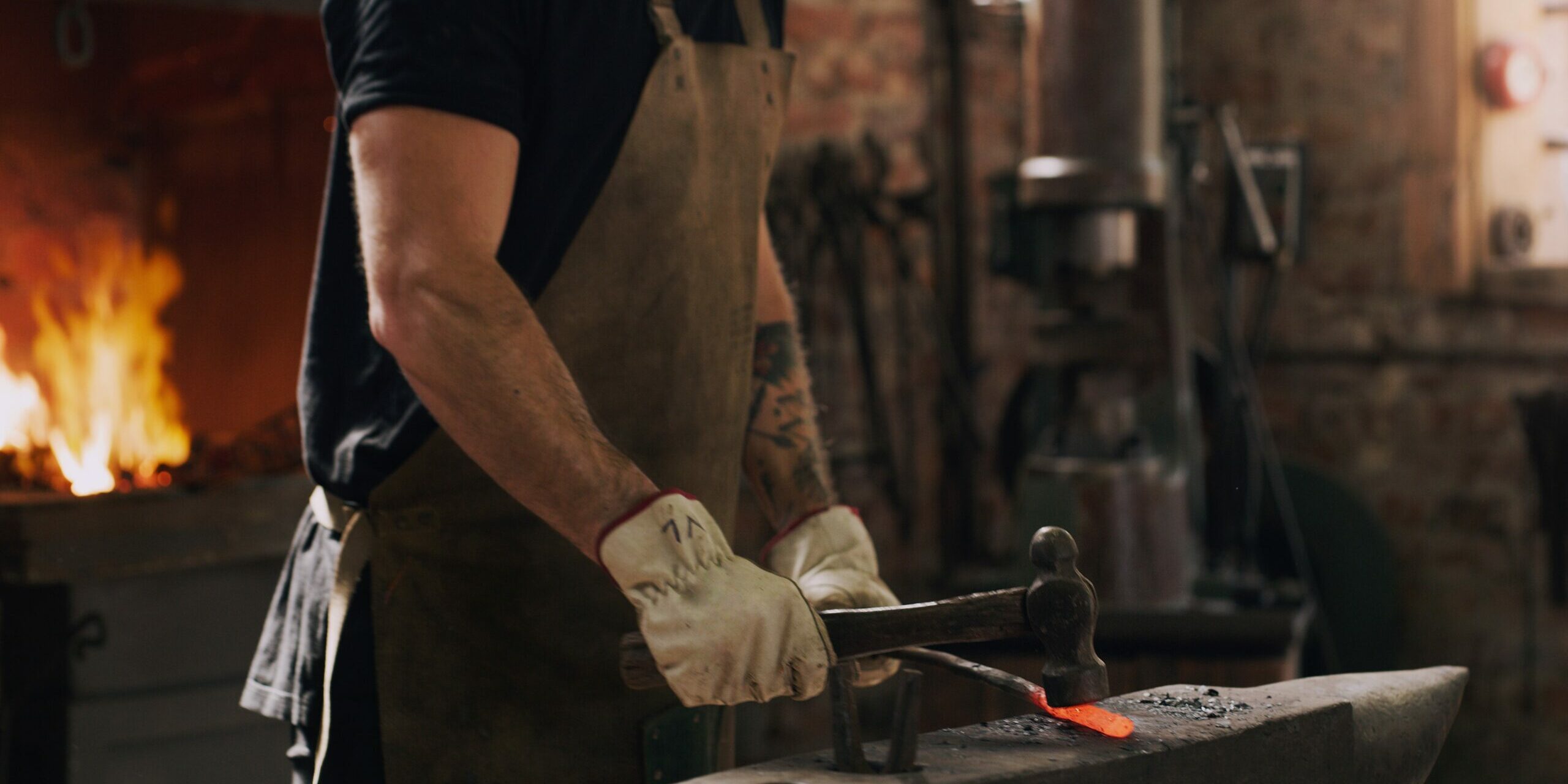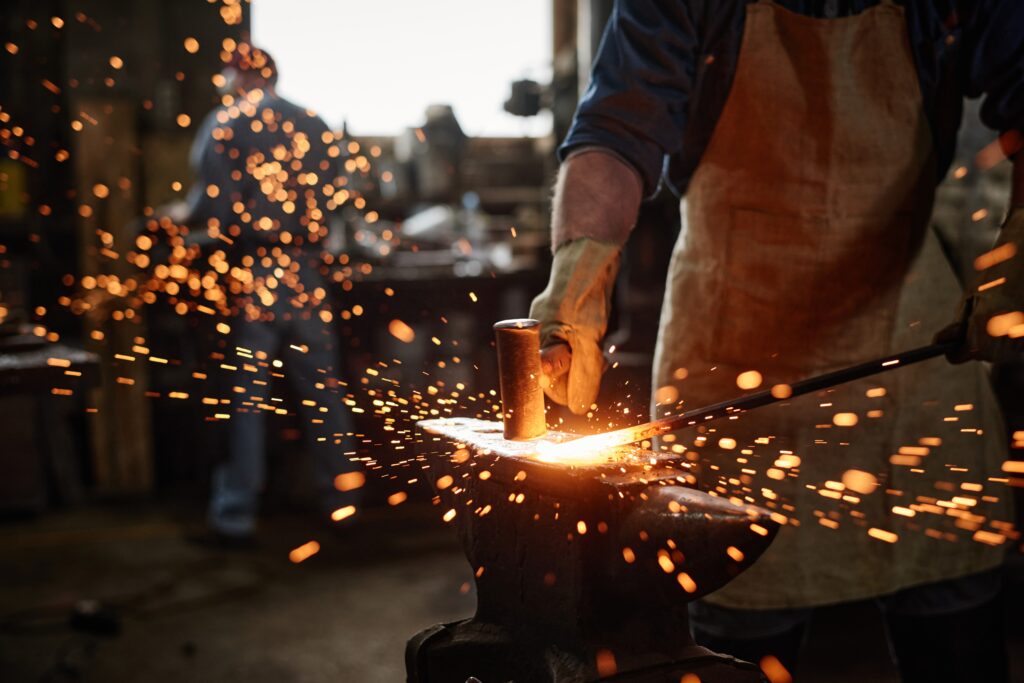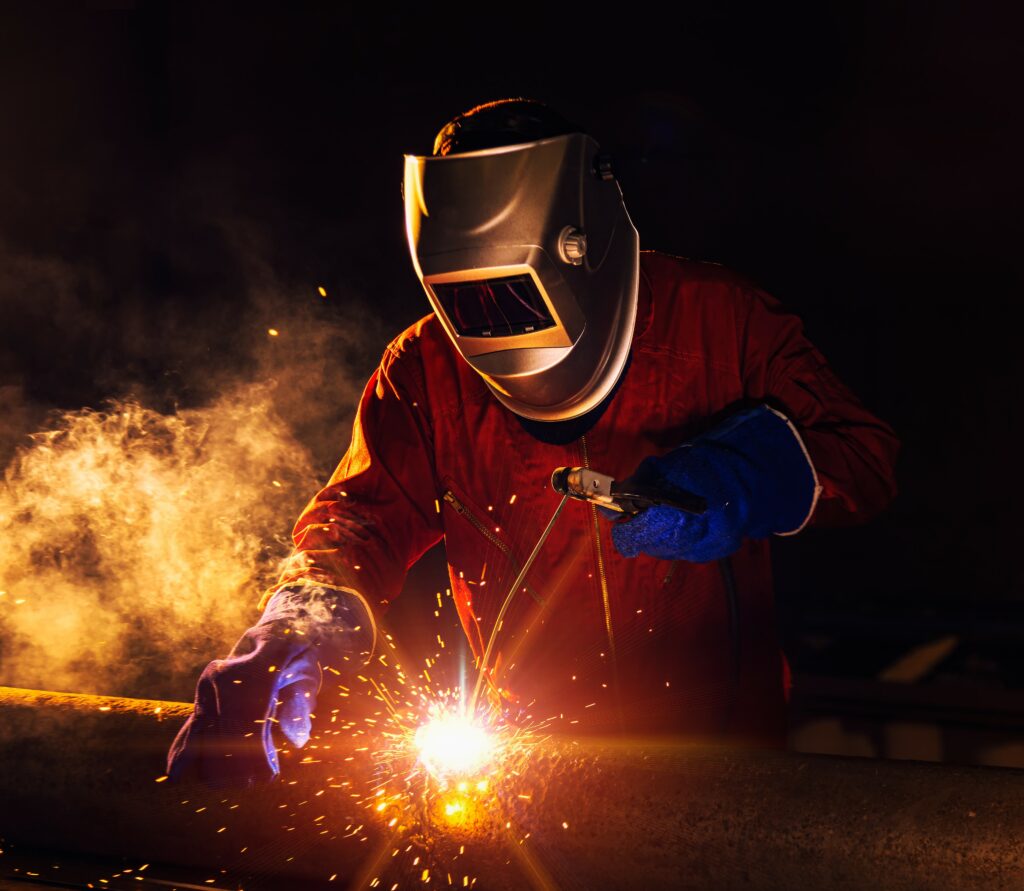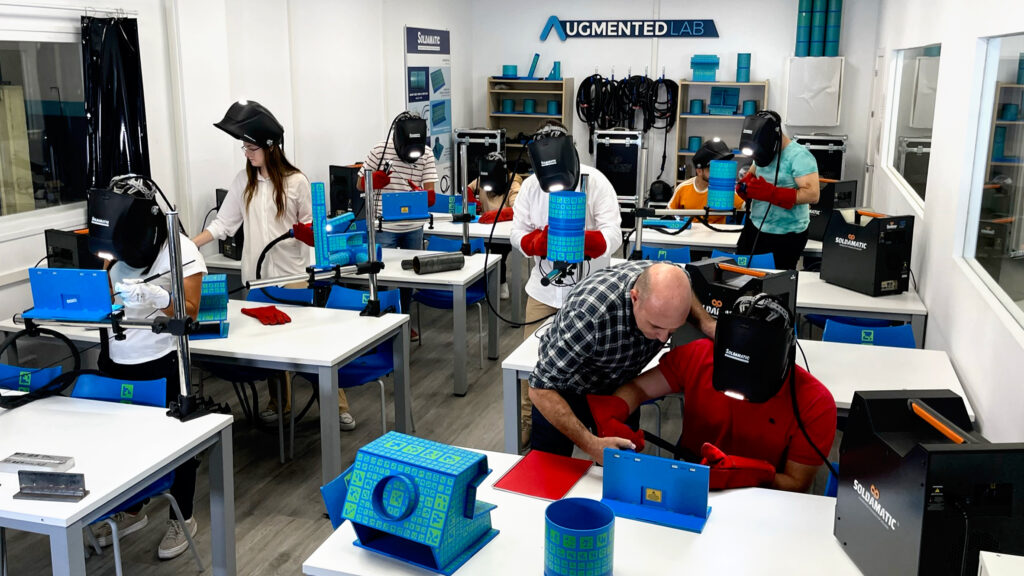In the world of metalworking, welding is the heart of fabrication, repair, and innovation. From skyscrapers to delicate sculptures, welded metal structures are omnipresent in modern society. However, the origins of this craft go back thousands of years, evolving from the ancient art of forging. Onboard a journey through time to explore the fascinating history of forge welding.
The Ancient Beginnings and Early Welding Techniques
The origins of forging can be traced to ancient cultures like the Mesopotamians, Egyptians, and Chinese, who understood its cultural importance in crafting tools, weapons, and artistic creations.
As we move through the centuries of history, we find interesting traces of ancient welding techniques preserved in archaeological records. From the melting of copper and bronze to the forging of iron and steel, ancient civilizations embarked on a journey of discoveries that would lay the foundations of modern metallurgy.
|
Ancient Welding Techniques |
|
|
Forge welding |
One of the earliest forms of welding, forge welding involves heating two metal pieces to a temperature where they become soft and then hammering them together to form a solid bond.
This technique was practiced by civilizations such as the Sumerians, Egyptians, and Romans as far back as 3000 BC. |
|
Cold welding |
In some cases, metals could be joined together without the need for high heat. Cold welding, also known as friction welding, occurs when two clean metal surfaces are brought into contact under pressure, causing them to bond at the atomic level.
This phenomenon was observed in ancient times when metals with similar properties were pressed together, resulting in a strong bond. |
The Impact of Forge Welding on Society and Industry
Since its early origins in ancient civilizations, forge welding has continually evolved, catalyzing innovations in metallurgy, manufacturing, and engineering.
From ornate gates and railings to intricately crafted jewelry and sculptures, forge welding has enabled the realization of intricate designs and decorative motifs, enriching cultural heritage and aesthetic sensibilities. As an example, throughout history blacksmiths and artisans have employed forge welding techniques to create functional objects of beauty and artistic expression.
Forge welding has also played a pivotal role in driving technological advancements and industrial progress. Forging techniques have been instrumental in the development of key industries such as automotive, aerospace, and construction, where durable and high-strength welds are essential for ensuring structural integrity and performance. By enabling the fabrication of large-scale metal components with superior strength and reliability, forge welding has helped to enhance the efficiency and longevity of infrastructure systems, thereby supporting sustainable development and urbanization efforts worldwide.
Furthermore, forge welding has made significant contributions to economic development. The widespread adoption of forge welding techniques has facilitated the construction of bridges, buildings, railways, and other critical infrastructure driving economic growth and connectivity to the civilization. In addition, the demand for skilled welders has created employment opportunities and fostered economic prosperity in communities dependent on metalworking industries.
As a conclusion, the ability to join metal pieces together seamlessly through forge welding has enabled the creation of complex structures, machinery, and tools, laying the groundwork for modern industrial processes.
|
Modern Welding |
|
|
Electric Arc Welding |
The discovery of the electric arc by Sir Humphry Davy in the early 19th century revolutionized welding, allowing for higher temperatures and greater control over the welding process. This led to the development of arc welding techniques such as shielded metal arc welding (SMAW), gas metal arc welding (GMAW), and gas tungsten arc welding (GTAW). |
|
Advancements in Materials and Equipment |
In the 20th and 21st centuries, advancements in materials science, robotics, and computer technology have further refined welding processes and equipment. Welding has become an integral part of manufacturing, construction, aerospace, automotive, and other industries, with applications ranging from building structures to assembling electronic components. |
The Impact of Forge Welding on Society and Industry
Forging welding allowed to shape metals (eg. bronze, iron) heated and hammered together to create desired forms with specialized tools. In fact, the earliest evidence of metalworking dates to around 8000 BC, with civilizations crafting objects through the process of forging primarily used for making tools, weapons, and everyday objects.
|
Time Period |
Techniques |
Applications |
|
Ancient Times |
Heating in Open Fires
Charcoal Furnaces |
Toolmaking, weaponry, agricultural implements |
| Hammering and Shaping | Cooking utensils, jewelry, religious artifacts | |
| Forge Welding | Joining metal pieces, construction, artistic metalwork | |
|
Medieval Era |
Advanced Furnaces | Armor making, weapon crafting |
| Improved Joining Methods | Architectural metalwork, decorative elements | |
|
Industrial Age |
Introduction of Steam-Powered Hammers | Shipbuilding, railway construction, machinery |
| Development of Electric Arc Welding | Mass production, industrial manufacturing | |
|
20th Century |
Automation and Robotics | Automotive manufacturing, aerospace industry |
| Advancements in Welding Equipment | Infrastructure Construction, High-rise Buildings | |
|
Present Day |
Digitalization and Automation | Precision welding, quality control |
| Sustainable Practices | Green Energy Projects, Eco-friendly Construction |
Welding with Augmented Reality: A harmonious Convergence
Looking towards the future, Augmented Reality promises to revolutionize modern welding practices, improving the efficiency, accuracy, and safety of the manufacturing process. The marriage of ancient welding techniques and augmented reality represents a harmonious convergence of tradition and innovation.
Imagine wearing an AR-equipped welding helmet that provide real-time visualizations of welding parameters, material properties and structural integrity. By seamlessly integrating digital information into the welding workflow, AR enables welders to make informed decisions and achieve unparalleled levels of craftsmanship. Soldamatic, with its cutting-edge AR capabilities, serves as a bridge between the ancient traditions of welding and the innovative practices of the modern era.
Soldamatic also plays a crucial role in preserving the rich heritage of welding craftsmanship for future generations. This welding simulator revolutionizes the learning experience by embracing AR technology to create dynamic and engaging training modules.
The evolution of Forge Welding: A path to the Industry 4.0
While the term “welding” may not have been used in the same context as it is today, ancient civilizations employed various techniques to bond metals for practical and artistic purposes.
Exploring the history of forge welding can provide valuable insights into the evolution of this essential joining process. The craftsmanship and artistry inherent in forge welding have become linked to cultural identities and traditions, serving as a testament to human ingenuity and creativity in diverse societies and civilizations.
From its humble beginnings in the forges of ancient civilizations to the high-tech welding labs of today, the art of forging welding has come a long way. As we embark on this journey of exploration and discovery, we should embrace the transformative potential of augmented reality to illuminate the past, inspire the present, and shape the future of welding.














